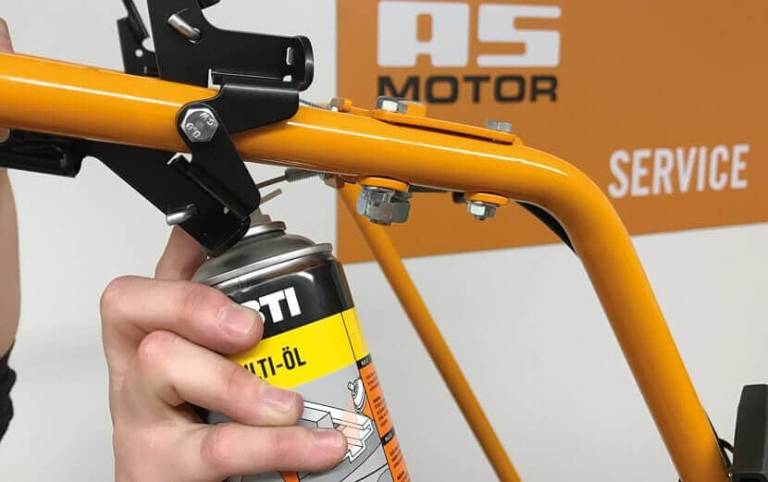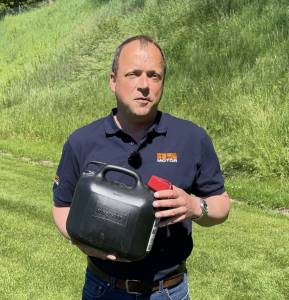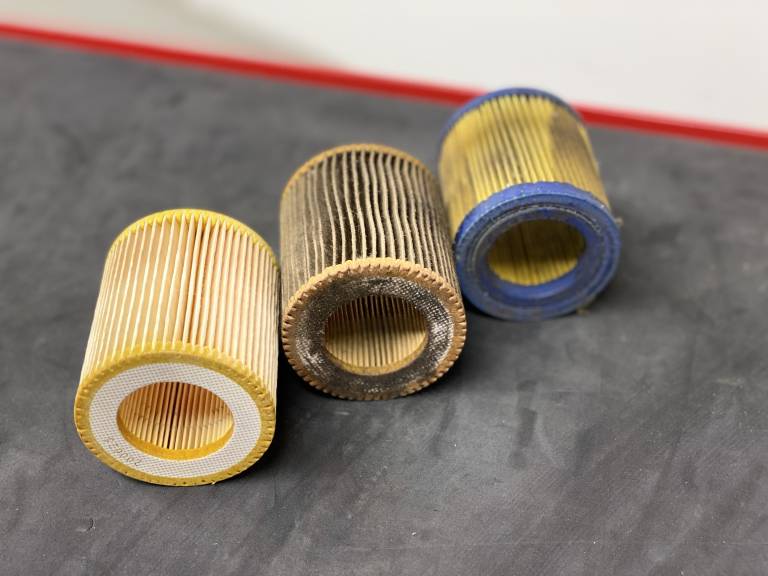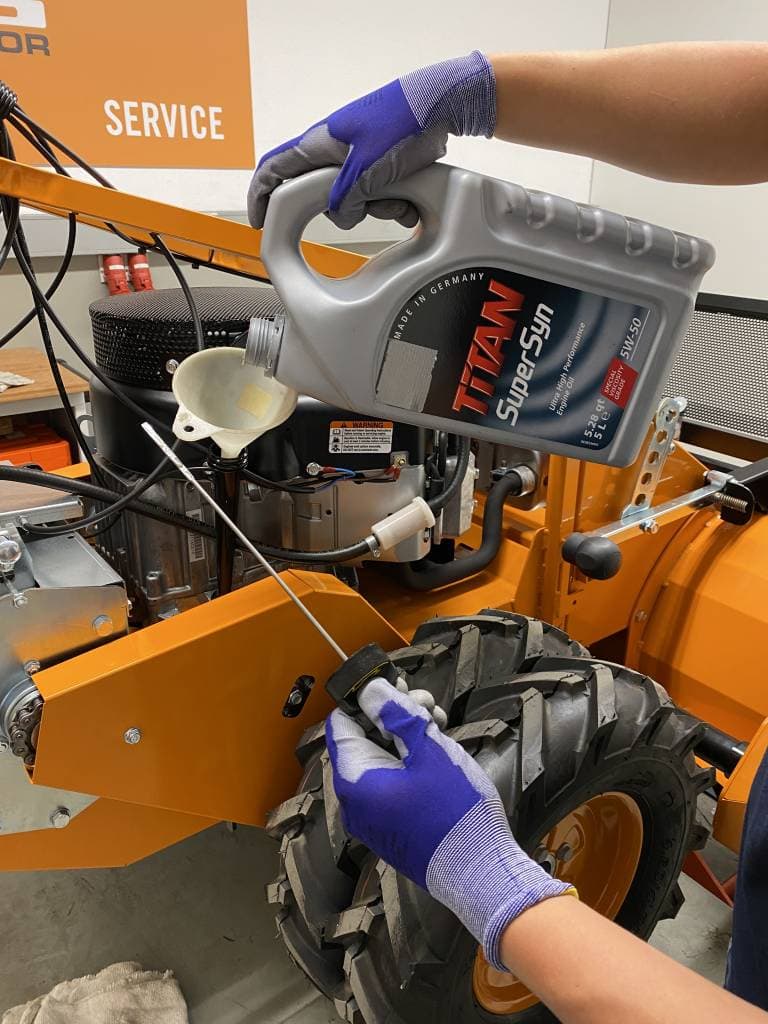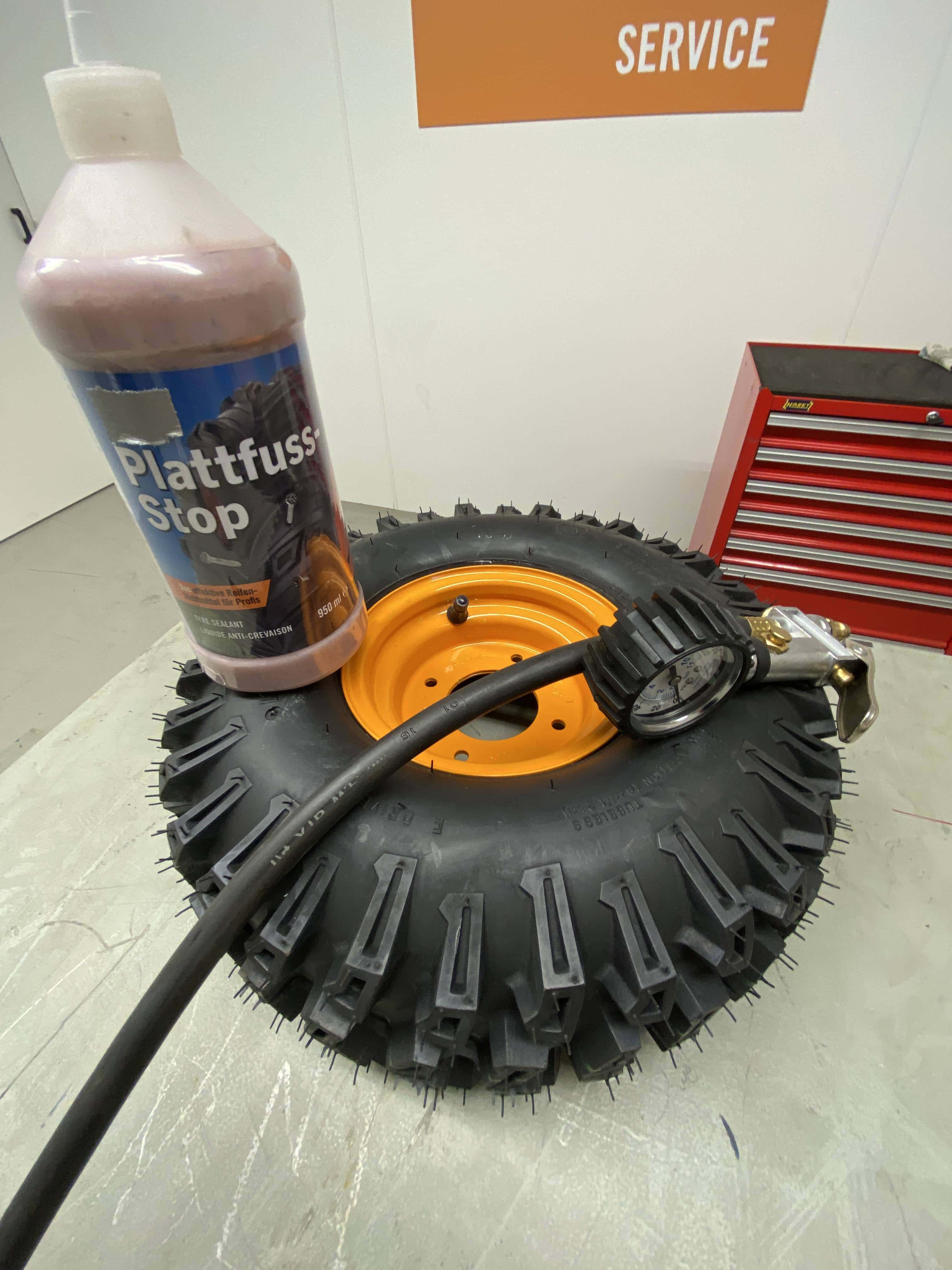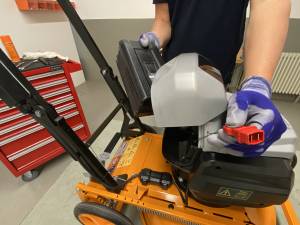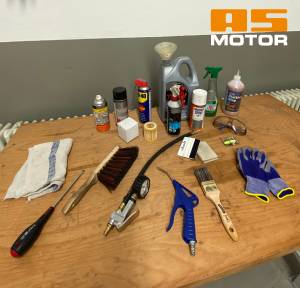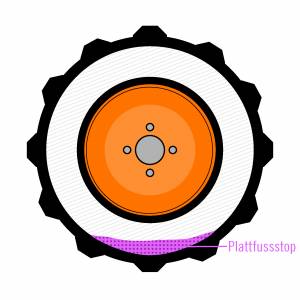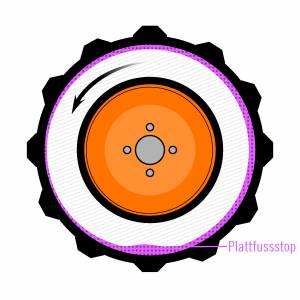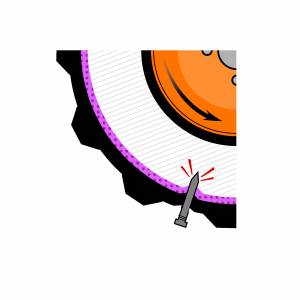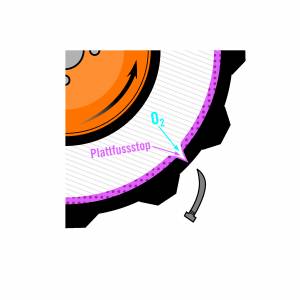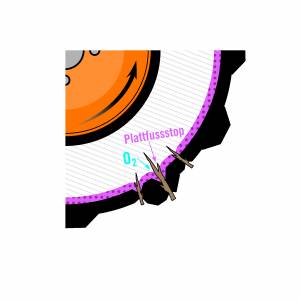The right mower for my grass - SUV or sports car?
When it comes to cars, there are SUVs and sports cars. With modern SUVs, you can also drive fast on the road, whereas a sports car is completely useless off-road. The situation is similar when comparing lawn mowers with high grass or meadow mowers. An advantage in one specific application can become a significant disadvantage elsewhere. Together with our expert Roman Mühleck from the product management at AS-Motor, we are today looking into the question for which application you need a high grass or meadow mower or whether a lawn mower is sufficient for the grass to be mowed.
The lawn mower - The clean cut counts
A classic lawn mower should be able to cut grass up to a length of approx. 20 cm and throw it into a catch bag without leaving any residue. To ensure that it masters this task cleanly, the directly driven blade has a high speed and thus a high cutting speed. The idle speed is around 2800 to 3000 revolutions per minute. Fast blades produce a clean cut surface on the blade of grass, which in turn turns less white, is less frayed and thus produces an attractive cutting pattern. At the same time, the blades of a lawn mower must generate a strong wind current so that the grass is sucked upwards, cut and then flung into the catch bag without residue. “This wind current, by the way, consumes most of the engine power, more than the mowing itself. At the same time, it is also this wind current that makes the typical hum of a lawn mower,” Roman Mühleck explains and adds: “This whole process takes place in a closed mowing deck, without a front opening for the grass, but only with an opening for the rear discharge. That is the secret of a clean lawn cut.”

Our expert: Roman Mühleck, Product Manager at AS-Motor.
When the power runs out
However, if the grass gets higher than 20 cm, a lawn mower will have problems dealing with it. First, all the grass in front of the mower has to squeeze under the mower bonnet. The resistance is felt when a lawnmower stops in tall grass and you have to push it forward with force. Now the long grass finally gets into the mower bonnet. But it is now pushed over and flattened. In addition, a lot of material gets into the bonnet at the same time. The engine starts to struggle and its speed drops. As a result, it can suck worse, cut worse and eject worse. The result is an unclean cut, standing stalks, unclean collection and finally a clogged mower bonnet – the engine goes out! It’s a similar story with mulching lawnmowers. “This is when our high grass mowers from AS-Motor come into play,” the expert knows.
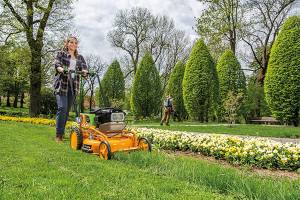
With a classic lawn mower, the most important thing is a clean cut. clean cut, as achieved with the AS 510 EProClip.
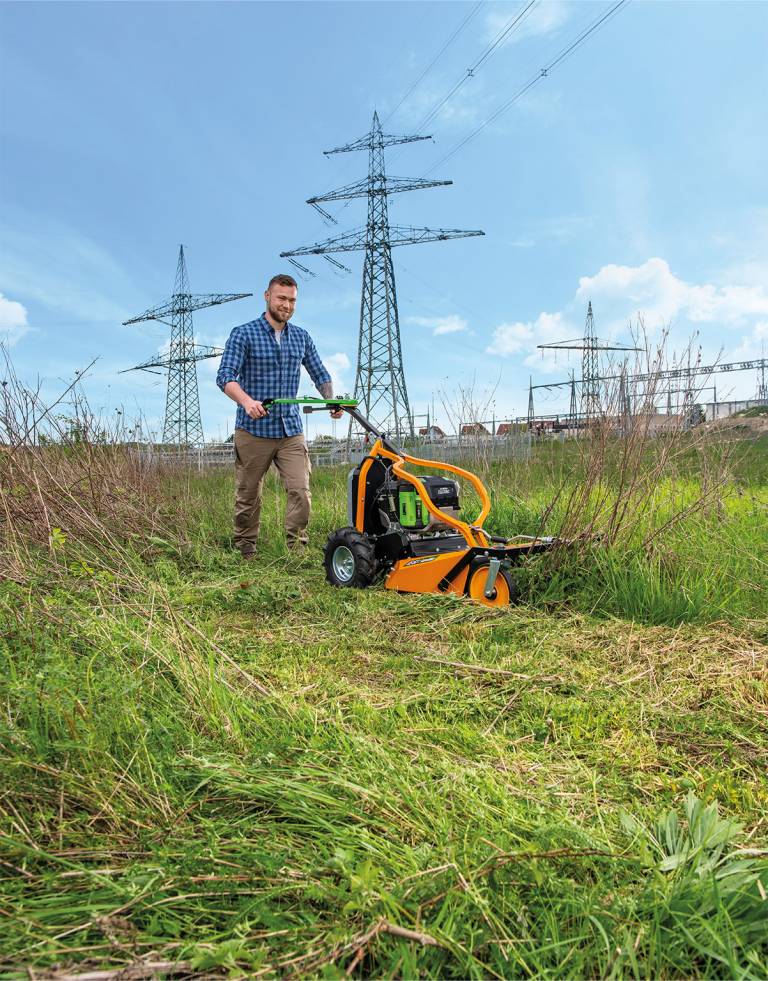
Grass heights of up to 100 cm and sloping terrain are no problem for the AS 63 EAllmäher.
The stronger ones: Meadow and tall grass mowers
Depending on the model, meadow mowers, high grass mowers or Allmäher can cut grass from 60 to 150 cm high. Above a certain thickness, they are also called scrub mowers. The biggest difference to a lawn mower is first of all the engine power of at least 5 hp or more. The mowing deck of these machines has a large opening to the front and allows long grass to reach the blades with little resistance without pushing it down completely. The stalks close to the ground can thus still be cut off by the blade at a right angle. Result: All grass is mown, few to no stems remain. In dense grass, however, the engine would soon reach its performance limit. The expert explains how this can be remedied: “Here we use a physical trick, an engine-blade reduction. The engine rotates at an idle speed of about 3400 to 3800 revolutions per minute. The speed is transmitted to the knife via a belt. By placing a larger pulley on the knife than on the motor, the speed of the knife is reduced, but the torque (power) on the knife is increased. Now the engine can cut dense and long grass because its power is multiplied. “At the same time, this separation of the blade and the motor by a belt protects the motor from damage if the blade hits a hard obstacle. The impact on the blade is absorbed by the belt and not transferred to the crankshaft. All models with a blade clutch, such as the AS 63 Allmäher, have this advantage.
The mown vegetation is discharged through enlarged discharge openings to the side or, in the case of closed mowing decks, to the rear between the wheels. Closed mowing decks with rear discharge, such as on the AS 62, AS 63, AS 65 and AS 73 Allmäher from AS-Motor, have a safety advantage, as the risk of falling rocks is reduced even further. In addition, they keep the clippings in the mowing deck longer, allowing them to be finely chopped (mulched). Models with a cross-blade system or flail mowers achieve the best mulching results here. Generally, tall grass mowers also have a stronger wheel drive than lawn mowers, as they also need to make progress on uneven terrain. Treaded wheels or pneumatic tyres with cleat tread are standard here. Models for use on slopes also have a brake, a parking brake or an engine brake as well as a differential lock and a laterally adjustable handlebar.
Not suitable for the English garden
Meadow and tall grass mowers are designed to cope with denser vegetation. Smaller models such as the Allmäher AS 21 can cut up to 60 cm of grass, large machines up to 150 cm. However, as explained above, the blade speed and the suction effect of the blade is reduced compared to a lawn mower. This means that cut surfaces are not as accurate and clean and any overturned or fine grass is not sucked up. In tall vegetation this disadvantage is little to not noticeable, but on a lawn it is. The cutting pattern on lawns is clearly worse. In addition, high grass mowers do not have a catch bag and the cuttings always remain visible on the surface. A real mulching lawn mower like the AS 510 ProClip is therefore the better choice here.

A professional lawn mower like the AS 531 can also cleanly mow grass up to 30 centimetres high.
Deciding on the right mower
Back to the comparison at the beginning. Meadow and tall grass mowers stand for the SUV and lawn mowers for the sports car. “The comparison only fits to a limited extent, because high grass mowers are not lawn mowers. They do not manage to create the same aesthetics on a lawn and, in addition, leave everything where it grew,” Roman Mühleck clarifies. Nevertheless, some models of high grass mowers with an additional mulching kit or two blade speeds can achieve quite useful mowing results on lawns – perhaps not in an English garden but certainly on a holiday property. On the other hand, lawn mowers definitely reach their limits with tall grass over 30 cm. Only powerful professional lawn mowers such as the AS 531 with at least 180 cm³ engine capacity and a 4-stroke or 2-stroke engine can still do something here.
So now it’s up to you to choose the right mower for your requirements. Many machines can be inspected and tested directly at the dealer. With larger machines, you should definitely mow once yourself, preferably on your own terrain.
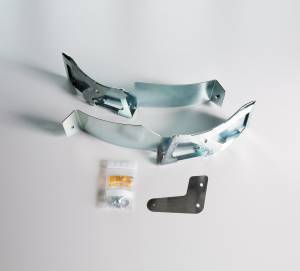
The additionally available mulching kit for the AS 62 and AS 63 provides a more attractive cutting pattern.
